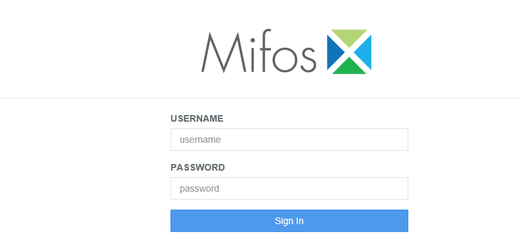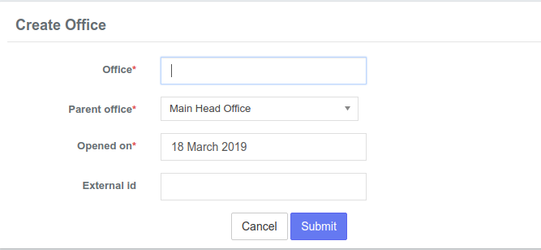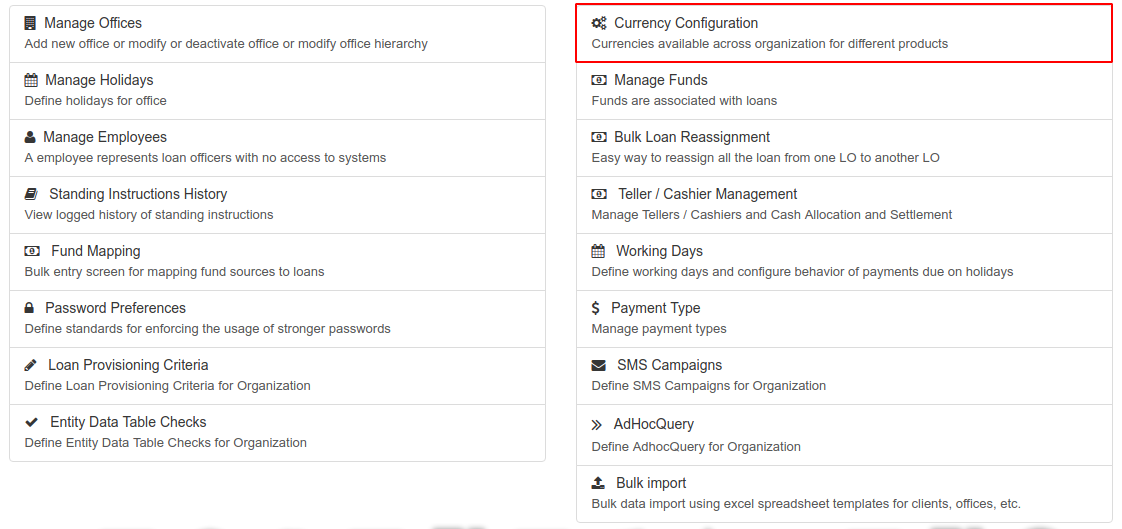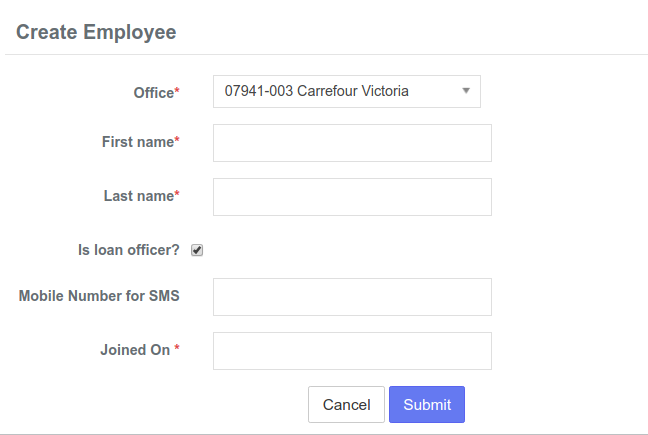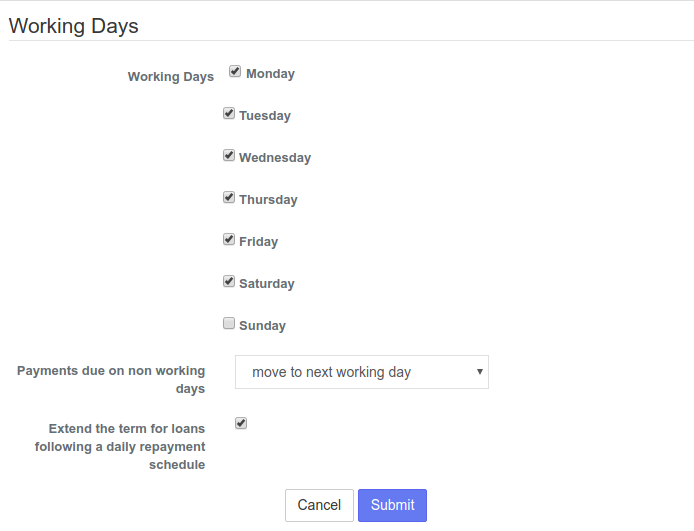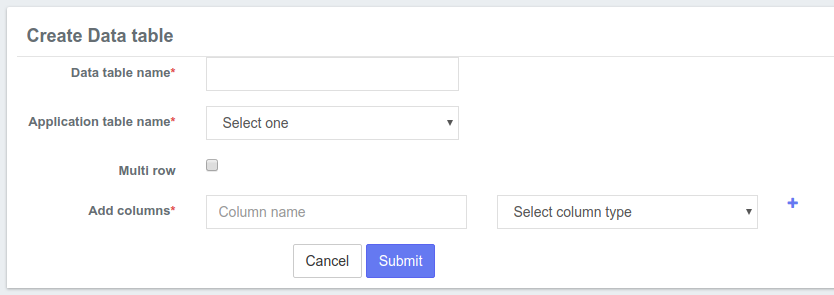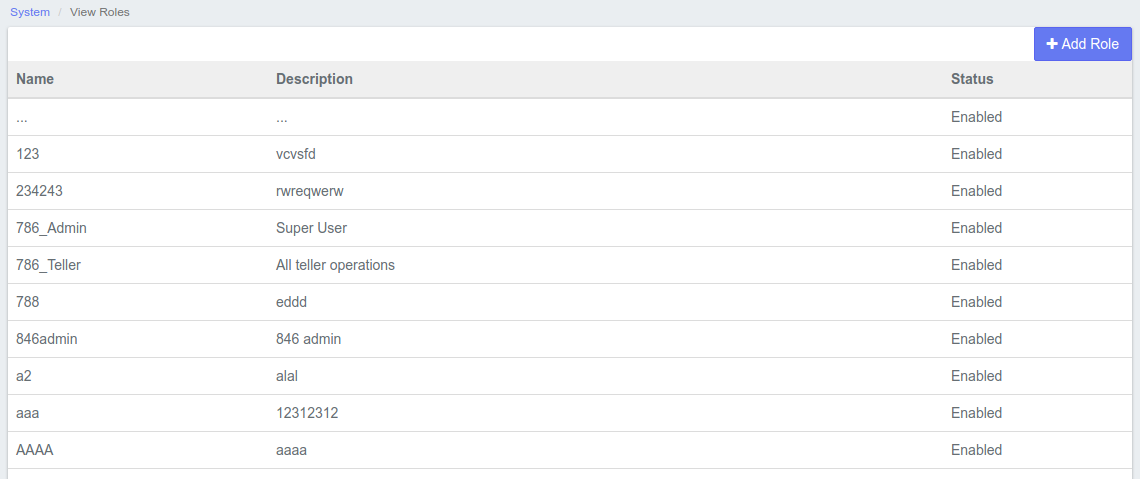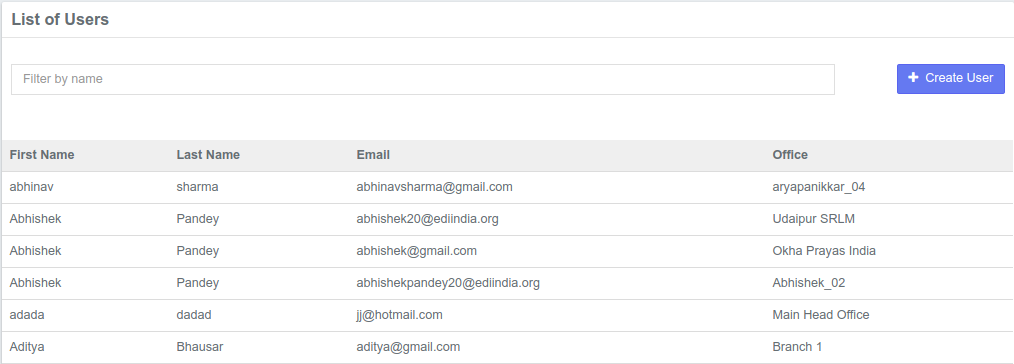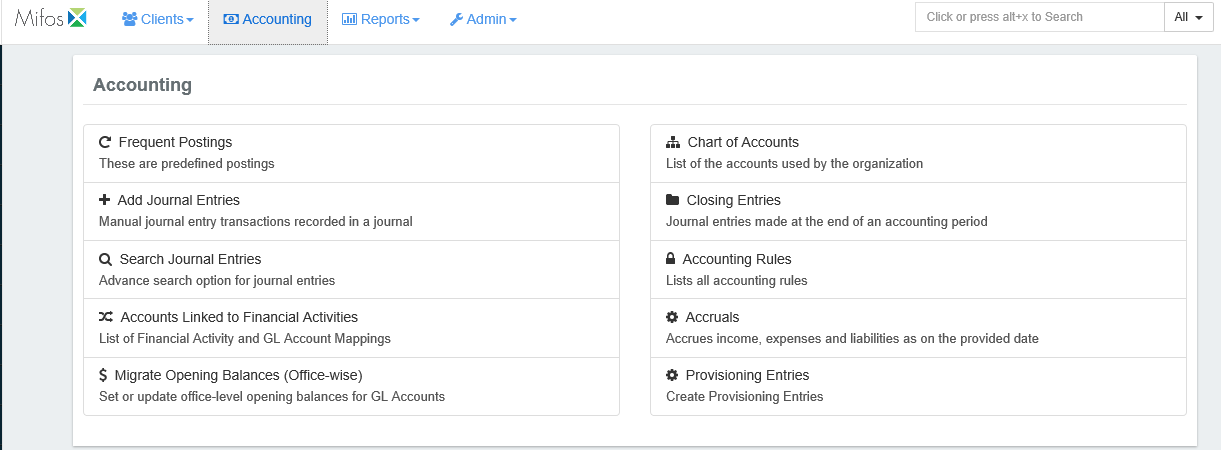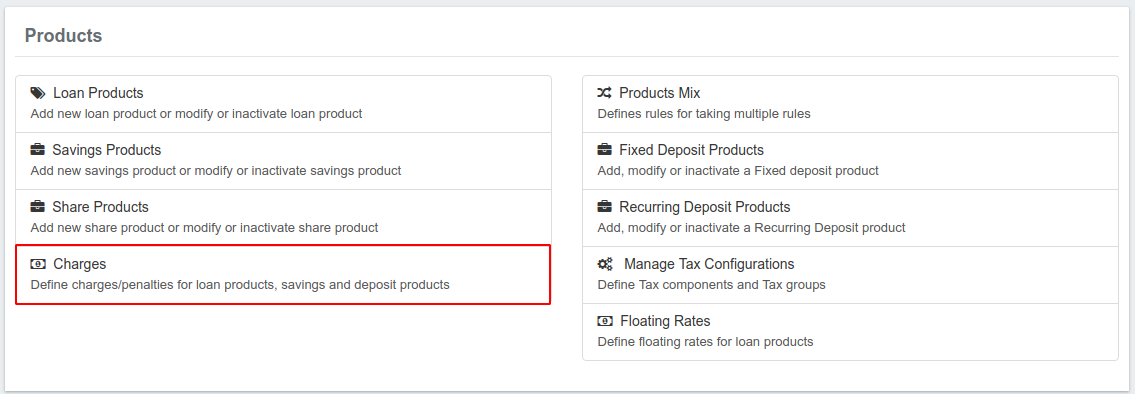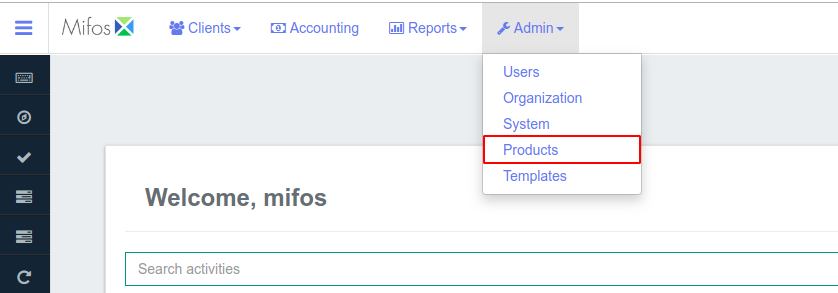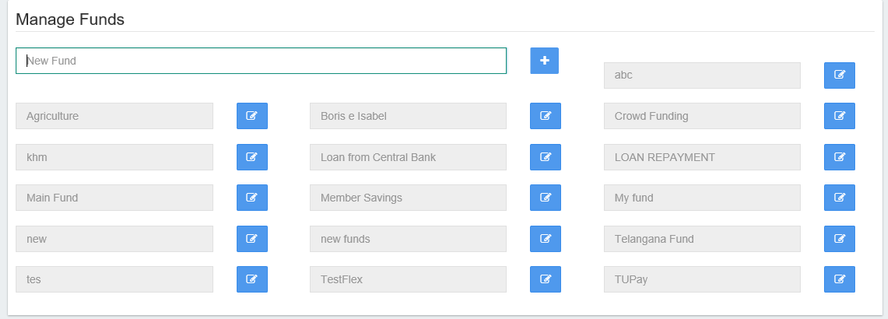Initial System Set Up
1) Login-in into Mifos X :
Follow this link to the Sign In Page.
- Type username: mifos
- Type password: password
- Click "Sign In"
NOTE: The initial username and password will be changed in system set up. The default username and password is Super User to allow for full system set up.
Across the top are the navigation drop downs. The Mifos logo will return the user to the Welcome Page from anywhere in the system. Overview:-
- Clients, Groups and Centers - drop down will be used to access individual accounts, groups and centers.
- Accounting - drop down opens the menu to access the system tools required by the accounting departments.
- Reports - Drop down provides access to all areas of system reports including the default reports provided in the Mifos download and custom reports that will be developed by the organization.
- Administration - This is where the system is set up including users, organization, products and templates.
- Global Search - This will allow the user to quickly navigate the system.
- Mifos dropdown. - This will have settings, profile and help.
The next step in configuration is to set up your organization. Begin at the main screen, click on Admin then select Organization.
2) Set-up your Offices :
Follow this link to the Manage Offices page.
- Using the information gathered in the Pre Configuration Plan.docx, the first step is to create the Main Office of your organization. In this example, we use the name "Head Office". You enter the name that best describes your office name. This may be a building name, a road name or any other naming scheme your particular organization uses.
- In the Office field, enter your main office name.
- In Parent Office, do not enter a name.
- In the Opened on field, enter the date your organization opened this office.
- In the External ID field, enter any numeric identifier your organization may use to further identify your offices. This is an optional field provided for your unique customization. It is not required for effective Mifos functionality.
Review the information entered and if it is all correct, click on the Submit button. The head office is now created.
If your organization has multiple offices, return to the Admin/Organization/Manage Office's screen and select +Create Office. In this example, we use the name "Branch Office". You will enter the name that best describes your additional office name.
NOTE: It is best to set up your head office first. Then set up any regional offices. Finally set up the individual branch offices taking care to link them to the correct regional or Parent office.
3) Configure Currency:
Currency Configuration - Return to the Admin/Organization Screen.
Select Currency Configuration. Click on the +Add/Edit button. Enter your local currency, then press Submit.
4) Define Holidays:
Return to the Admin/Organization screen and Select Manage Holidays.
If the holiday affects the entire organization, select Head Office in the drop down menu located on the left top screen. If the holiday being created affects only one office, select that office name, which we have described as "branch office" here. Click on the +Create Holiday button. Next, fill in the dates of the holiday, name of the holiday, along with brief description.
Take note that the fields with asterisk (*) are required.
- In the Name field, key in the name of the holiday.
- In the From Date field, key in the next date of the holiday.
- In the To Date field, key in the ending date of the holiday.
- In the Repayment scheduled to field, key in the first business day following the holiday. This will allow loan payments to remain current should the regular due date fall on the holiday.
- In the Description field, key in the description your organization uses for the holiday.
Expand the box next to Applicable office. The full list of offices will display. Click on each office affected by the holiday.
Review the information for accuracy, then click on Submit.
The Holiday will go into a "Pending for activation" status. An authorized user must review the holiday and activate it in the system.
5) Create Employees:
Return to the Admin/Organization Screen and select Manage Employees -
Click the blue Create Employee button at the top-right of the page to create a new employee.
Take note that the fields with asterisk (*) are required.
- Complete the required fields:
- Select the appropriate office from the drop-down menu
- First name
- Last name
- Designate the employee as a loan officer if that is the case (optional)
- Optional - Add a Mobile Number for SMS messaging.
- Provide the Joining Date of the employee.
- Click Submit.
6) Define Working Days
Return to the Admin/Organization Screen and select Working Days.
Now working days can be defined from front-end and it's easy to use. By just checking the check box to specify as working day & Un-checking the box to specify as a non working day. Click on Submit.
In the example on the image below: Monday, Tuesday, Wednesday, Thursday, Friday, Saturday are Working days & Sunday (Un-checked box) is a Non-working day.
Other Organization features will be used later in system set up and use.
- Bulk Loan Reassignment - this is an operational field that allows the organization to reassign all loans from one loan officer to another. This field will be used in day-to-day operations. No initial set up is required.
- Standing Instruction History - this will be used to track and search for standing transaction history.
- Teller/Cash Management - this will be used to assign users to a cash drawer.
7) Create Data Tables
Return to the Admin/System Screen and select Manage Data Tables (Optional - For capturing additional details)
Mifos X data-table allows the user to add custom fields in addition to the built-in fields to a client profile, loan/saving account, group, center or a office. When creating a set of custom fields (i.e, data-table), you can set multi-row option to capture multiple instance of data. And custom field supports 6 data types (String, Number, Decimal, Date, Text and Drop down). Review the system provided data tables then, using your Pre-Configuration Guide, create additional fields in this area.
Select "Create Data table"
The Application table name field will provide a drop down of system functions the data table will affect. For example, if you are adding fields that will impact the Client level, click on Client.
Add Columns, enter name, from drop down select type (DBH - write this properly & tie in to pre config guide)
8) Define System Codes:
Return to the Admin/System Screen, then select Manage Codes - For defining system codes for examples - Payment types, Collateral, etc.
Codes are mostly system defined which means the code itself comes out of the box and cannot be modified. However, its code values can be. e.g. 'Customer Identifier', it defaults to a code value of "Passport" but could be "Drivers License", "National Id" or any other ID acceptable to your organization.
Review the list of system defined codes, then edit as needed for your operations. For more information on code configuration, see Manage Codes.
9) Define Roles & Permissions:
Return to the Admin/System Screen, then select Manage Roles and Permissions
Using the Pre-Configuration Guide, proceed through each function and click on the system privileges allowed by the position. It is important to take care when setting up User Roles as these will be used when setting up each individual employee.
In this example, an Operations Manager will be allowed to allocate cashier cash, create teller, etc. They will not be able to do any other loan transactions.
10) Create Users :
Return to the Admin Screen and select Users
Select Create User, add the user's details and submit.
11) Configure Maker Checker Tasks :
Return to the Admin/System Screen, then select Configure Maker-Checker Tasks (Optional)
Mifos X Maker Checker functionality allows a financial institution to define transactions as having a maker and a checker phase. One user enters, deletes or changes data. Then, another user that has "Checker" rights for that transaction can inspect and approve the data. By default, Maker Checker functionality is disabled. See Update Global Configuration to enable/disable Maker Checker functionality at a global level.
Additionally, Maker Checker functionality for each transaction (permission) is disabled by default. see Enable/Disable Permissions for Maker Checker to enable/disable Maker Checker functionality at a transaction (permission) level.
Finally, to give checking rights to a user (via a role associated with the user) see Update a Role's Permissions.
12) Global Configuration:
Return to the Admin/System page, then select Configuration.
Global configuration related to set of supported enable/disable configurations:
- maker-checker - defaults to false - if true turns on maker-checker functionality
- reschedule-future-repayments - defaults to false - if true reschedule's repayments which falls on a non-working day to configured repayment rescheduling rule
- allow-transactions-on-non_working days - defaults to false - if true allows transactions on non-working days
- reschedule-repayments-on-holidays - defaults to false - if true reschedules repayments which falls on a non-working day to defined reschedule date
- allow-transactions-on-holiday - defaults to false - if true allows transactions on holidays
IMPORTANT - If you want to enable Accounting module, please set-up Accounting before moving to the next step. If you don't want to setup Accounting module you could skip this step.
13) Accounting:
To access the Accounting menu and the options within, click on the Accounting button on the top of the screen:
To Enable Accounting Module you need to follow the mandatory step by step instructions below before you do any transaction:-
Step 1) Create chart of accounts - Chart of Accounts - General Ledger Setup.
Step 2) Map opening balance contra account in - Accounts linked to Financial Activities
Step 3) Pass opening balance entries - Migrate opening balances(Office wise)
Step 4) Map your products with respective accounts - Once the Products are defined, come back to this section and follow the steps.
- Go to >> Loan Products - Accounting
- Go to >> Savings Products - Accounting
- Go to >> Fixed Deposit Products - Accounting
- Go to >> Recurring Deposit - Accounting
14) Define Charges:
Go to Admin>>Products Screen and select Charges
In order to attach charges to products, you need to define charges at this point. Later at the time of defining product, you could add charges by just selecting it from drop-down.
To create charge, please refer link:- Charges
15) Define Products:
Go to Admin>>Products.
Products are set up once and are then available to qualifying clients (individuals, groups, and centers).
To define Products click on respective mentioned links below:
- Loan Products
- Savings Products (current and saving accounts)
- Fixed Deposit Products
- Recurring Deposit
Others:-
Setting up your Fund Source:
Return to the Admin/Organization Screen and select Manage Funds.
If your organization has funds that are to be used for specific lending purposes, the names are defined here. In the example below the new fund "Rotary Internal Agriculture Loan 2014" has been entered into the "New Fund" field. Loans that are made to customer that fall into this category will link to the fund to enable the organization to properly monitor fund use and to provide reports. After the fund name has been entered, click on the "+" to add the fund to the list.
Return to the Admin/System Screen, then select Manage Reports
There are numerous reports within the Mifos X system. Many are core reports that are pre-installed for your organization. Existing reports can be customized and new reports written. For details regarding report generation, see the Manage Reports section.
